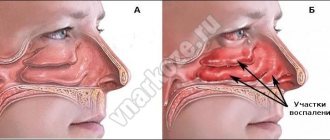The introduction of drugs into the patient's body that cause inhibition of the central nervous system is intravenous anesthesia. In addition to the above, it helps:
- turn off consciousness;
- block or significantly weaken some reflexes;
- completely relieve pain.
At the DentalHouse clinic we use only modern drugs of the latest generation, which ensure the safety and comfort of the patient.
What is special about intravenous anesthesia?
Perhaps the main advantage of intravenous anesthesia is its immediate effect, as well as the rapid recovery of a person from an unconscious state, especially in comparison with other types of general anesthesia. The duration of anesthesia depends on the drug chosen and the volume of administration. Therefore, if the doctor needs more time for the operation, the anesthesiologist will gradually add medication to prolong it.
Intravenous anesthesia is the best choice for patients who are afraid of dental treatment. Complete muscle relaxation does not occur; the patient breathes on his own the entire time he is working under intravenous anesthesia. In case of long and complex operations, experts recommend a combination of several types of anesthesia.
Intravenous anesthesia over 30 minutes
prevents the patient from deep sleep, and not through the administration of muscle relaxants, as with endotracheal anesthesia. Therefore, during intravenous anesthesia, the patient breathes on his own and in most cases does not need a ventilator (artificial lung ventilation).
This type of anesthesia is widely used due to its simplicity, ease of dosing and management of anesthesia. It is used in cases where short-term and low-traumatic surgery or research is intended, since the effect of the drugs used for this type of anesthesia is short-lived and has a weak analgesic (pain-relieving) effect. Their main property is to turn off consciousness.
On average, depending on the type of drug used, one dose of the drug provides up to 20 minutes of unconsciousness. Therefore, if it is necessary to prolong anesthesia (in connection with an operation), regular addition of an anesthetic to a vein is carried out to maintain a state of drug-induced sleep.
Its main advantages include:
- — unnoticeable for the patient, but fairly quick introduction to anesthesia;
- — a pleasant fall asleep for the patient, practically without the stage of excitement;
- — rapid recovery of the patient from an unconscious state;
- - no irritation of the mucous membrane of the respiratory tract, as with inhalation anesthesia;
- — minimal impact on internal organs;
- - low incidence of nausea and vomiting.
Indications and contraindications.
Intravenous anesthesia is used everywhere today for short-term surgical operations and some instrumental research methods.
Indications for intravenous anesthesia:
- - hysteroscopy;
- - abortion;
- — obstetric manipulations (including suturing perineal tears after childbirth);
- — minor proctological operations (excision of anal fissure, hemorrhoids, polyps);
- - hiding abscesses;
- — short-term operations in urology;
- — in traumatology (reduction of dislocations, subanesthetic dressings in burn patients, osteosynthesis);
- - with instrumental research methods (fibrogastroduodenoscopy - FGDS, fibrocolonoscopy - FCS, bronchoscopy, MRI under sedation in pediatrics, etc.)
- — in dentistry (dental treatment under anesthesia).
In the case of planned operations, contraindications to intravenous anesthesia are:
- — Failure to follow a diet before surgery. A full stomach can cause regurgitation and aspiration (choking) of its own stomach contents (vomiting). The patient's stomach must be completely empty before anesthesia! Therefore, in the evening before the operation and in the morning, for the safety of the patient, eating and drinking is strictly prohibited!
- — Cardiac dysfunction (myocardial infarction, less than a month has passed since its onset, unstable angina or severe stable angina, uncompensated heart failure, severe heart rhythm disturbances);
- — Untreated hypertension or hypertensive crisis;
- — Acute neurological diseases, including coma;
- — Severe hepatic and/or liver failure;
- — Acute respiratory tract infections (pneumonia, acute or chronic bronchitis in the acute stage, exacerbation of bronchial asthma, ARVI), which can make it difficult for a patient to breathe independently under anesthesia;
- — Infectious diseases, including intestinal infections;
- — Also, each specific drug used for anesthesia has its own list of contraindications.
Important!
- — To avoid possible complications, the patient must undergo all necessary examinations and consultations with specialists before surgery/anesthesia.
- — You need to have an interview with an anesthesiologist who will explain to the patient the essence of the anesthesia; will help you choose the most appropriate and safe type of anesthesia in each specific case; will give recommendations on preparing for surgery under anesthesia.
- — During any procedure/operation under anesthesia, the anesthesiologist conducts careful monitoring with the measurement of basic vital parameters: blood pressure, pulse, heart rate, oxygen saturation, analysis of the gas mixture that the patient breathes, etc.
- — Modern anesthesia and monitoring equipment allows you to promptly correct emerging deviations and avoid complications.
Who is this method suitable for?
Intravenous anesthesia is recommended if:
- there is dental phobia (stomatophobia) – fear of dentists and appropriate treatment;
- a person has increased excitability.
- Difficulty in pain relief
There are no absolute contraindications for intravenous anesthesia - DentalHouse anesthesiologists will select the optimal drug with the maximum possible gentle effect on the patient’s body. Before intravenous anesthesia, the patient is given a list of tests that must be submitted to the clinic. The anesthesiologist must examine and consult the patient. Specialists may refuse to administer intravenous anesthesia if the concomitant general somatic disease is in the stage of exacerbation or decompensation.
The effect of anesthesia on the body
04.10.2021
For many, the term “anesthesia” has a frightening effect. This is understandable, since under anesthesia a person is deprived of the ability to control his actions. For this reason, a large number of myths and rumors are associated with anesthesia. Whether anesthesia is really so harmful to the body and what this harm consists of is to be clarified within the framework of this article.
What is anesthesia?
During anesthesia, the central nervous system is in a state of inhibition. The main task is to eliminate pain sensitivity. This is achieved by using drugs called anesthetics. In order to understand how anesthesia works, you need to have at least some understanding of the mechanism of pain.
The human body is literally permeated through and through with pain receptors. They are designed to absorb any irritation. A pain signal is transmitted to the receptor. It is then transmitted along a nerve fiber to the spinal cord . Already from it, information enters the brain , which is the main computer of the human body. by the brain and transmitted to organs and tissues in the form of pain. Under the influence of anesthesia, such a chain is broken. This blocks the transmission of pain impulses. Next we should consider the types of anesthesia.
Anesthesia and its types
“Narcosis” and “anesthesia” are not identical concepts. During anesthesia, consciousness is switched off (general anesthesia). During anesthesia, pain is eliminated with the help of anesthetics. You can interrupt impulses absolutely anywhere. Various types of anesthesia are based on this principle:
- Superficial anesthesia. This is achieved by using local anesthetics. In other words, impulse suppression occurs at the initial stage.
- Local anesthesia . The nerve through which pain impulses are transmitted is blocked. An anesthetic is injected into the place where the operation . Already in the initial part of the nerve, the pain impulse is interrupted.
- Conduction anesthesia. It is similar to local anesthesia. However, the nerve blockage does not occur at the site of the operation , but at any part of it. Let's say an operation is performed on the upper limb. In this case, the anesthetic can be injected into the collarbone area. When performing anesthesia of this type, the doctor must have high skill and precision. The needle should not hit the nerve. Otherwise it can be seriously damaged. But if the drug is administered at a considerable distance from the conductor, then the desired anesthesia may not be achieved.
- Epidural anesthesia. The nerve is blocked where it ends and enters the spinal cord . The area between the lining of the brain and the spinal canal is called the epidural space. This is where the anesthetic is injected.
- General anesthesia. All brain functions are depressed. Impulses enter it, but after processing there is no command about pain.
Of course, the safest type is considered to be superficial and local anesthesia. Conduction anesthesia poses a great danger. But this type is used only for surgical interventions on the extremities. In terms of danger, it is followed by epidural anesthesia. It is used for operations on the lower half of the body. The greatest risk is associated with general anesthesia.
Some common myths
anesthesiologist can say reliably how harmful anesthesia is . But most of them are still inclined to think that anesthesia is really harmful. However, this harm should not be correlated with common myths. Some people believe that after anesthesia you may not wake up. Of course, this is a misconception.
Before the operation , the anesthesiologist will carefully calculate the dose that is necessary for a particular patient. In case of an error, it will be detected by devices that monitor the patient during surgery . There is an opinion that anesthesia reduces life expectancy by at least 5 years. It is not known who came up with this, but no research has been carried out on this subject at all. With a smooth course of general anesthesia, the harm to the body will be minimal. But do not forget that any surgical intervention is a serious stress for the body.
Of course, there is a risk of not waking up after anesthesia. But statistics show that this is possible only in one case in a quarter of a million operations. At the same time, the mortality rate from car accidents is 1 in 10,000 accidents.
Some argue that after anesthesia, memory deteriorates and the intensity of thought processes decreases. This is partly true. But this can be observed mainly in elderly patients. They usually have vascular pathology of the brain . Anesthesiologists must take all these features into account.
Published in Surgery Premium Clinic
Preparing for the injection
In order to minimize discomfort after intravenous anesthesia, we strongly recommend having a conversation with your doctor and anesthesiologist, who will answer all possible questions and talk about the nuances of treatment in your particular case. You should also avoid consuming food and liquids several hours before surgery and perform all necessary hygiene procedures. Doctors will definitely give all recommendations in advance.
An important point is premedication - preparing the patient for anesthesia and surgery using various medications. It is needed for:
- relieving tension, anxiety, fear, panic;
- pain relief;
- prevention of allergic reactions.
After general anesthesia
Even after a good general anesthesia, in the first hours there is short-term confusion, disorientation in space and time, drowsiness, nausea, and dizziness. As the anesthetic drugs wear off, pain appears in the postoperative wound, but it is successfully relieved by the administration of strong anesthetics.
After general anesthesia with an endotracheal tube, patients complain of pain and sore throat caused by irritation of the mucous membrane of the upper respiratory tract, but this symptom, like nausea, passes very quickly. As a rule, patients feel well 3-4 hours after surgery, and on the second day they leave the clinic and return home.











